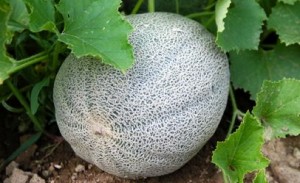 The unwritten rule in the produce industry is that a company should not market its product as safer than a competitor’s. The thinking is that once consumers get it in their heads that a fruit or vegetable is more safe, that means another is less safe, and then maybe they’ll avoid the commodity or category altogether. But what if your company or growing region has a strong food safety record, drafted best practices documents, followed and documented them, and then suffers for the second year in a row as a different region’s product kills consumers? The California cantaloupe industry is understandably upset it’s being found guilty by association to an Indiana salmonella outbreak that has been linked to more than 100 illnesses and two deaths. This isn’t even the first melon recall of the summer, as Burch Farms of Faison, N.C. recalled all its cantaloupe and honeydew in early August because of listeria contamination. No one became ill during that recall. There are some positive signs, as a number of produce associations and independent researchers are working on national commodity-specific guidelines for cantaloupes, which should be published before the end of the year. One can’t help but ask the question: Why did it take a second deadly outbreak to develop national guidelines? The industry, along with the Center for Produce Safety, organized a meeting in January to address the problems and future of cantaloupes after the Colorado outbreak. Cantaloupe grower-shippers need to do something more substantial this time before consumers simply stop buying. Editor’s Note: This opinion piece originally appeared in The Packer on August 24, 2012.
The unwritten rule in the produce industry is that a company should not market its product as safer than a competitor’s. The thinking is that once consumers get it in their heads that a fruit or vegetable is more safe, that means another is less safe, and then maybe they’ll avoid the commodity or category altogether. But what if your company or growing region has a strong food safety record, drafted best practices documents, followed and documented them, and then suffers for the second year in a row as a different region’s product kills consumers? The California cantaloupe industry is understandably upset it’s being found guilty by association to an Indiana salmonella outbreak that has been linked to more than 100 illnesses and two deaths. This isn’t even the first melon recall of the summer, as Burch Farms of Faison, N.C. recalled all its cantaloupe and honeydew in early August because of listeria contamination. No one became ill during that recall. There are some positive signs, as a number of produce associations and independent researchers are working on national commodity-specific guidelines for cantaloupes, which should be published before the end of the year. One can’t help but ask the question: Why did it take a second deadly outbreak to develop national guidelines? The industry, along with the Center for Produce Safety, organized a meeting in January to address the problems and future of cantaloupes after the Colorado outbreak. Cantaloupe grower-shippers need to do something more substantial this time before consumers simply stop buying. Editor’s Note: This opinion piece originally appeared in The Packer on August 24, 2012.
Sponsored by Marler Clark
